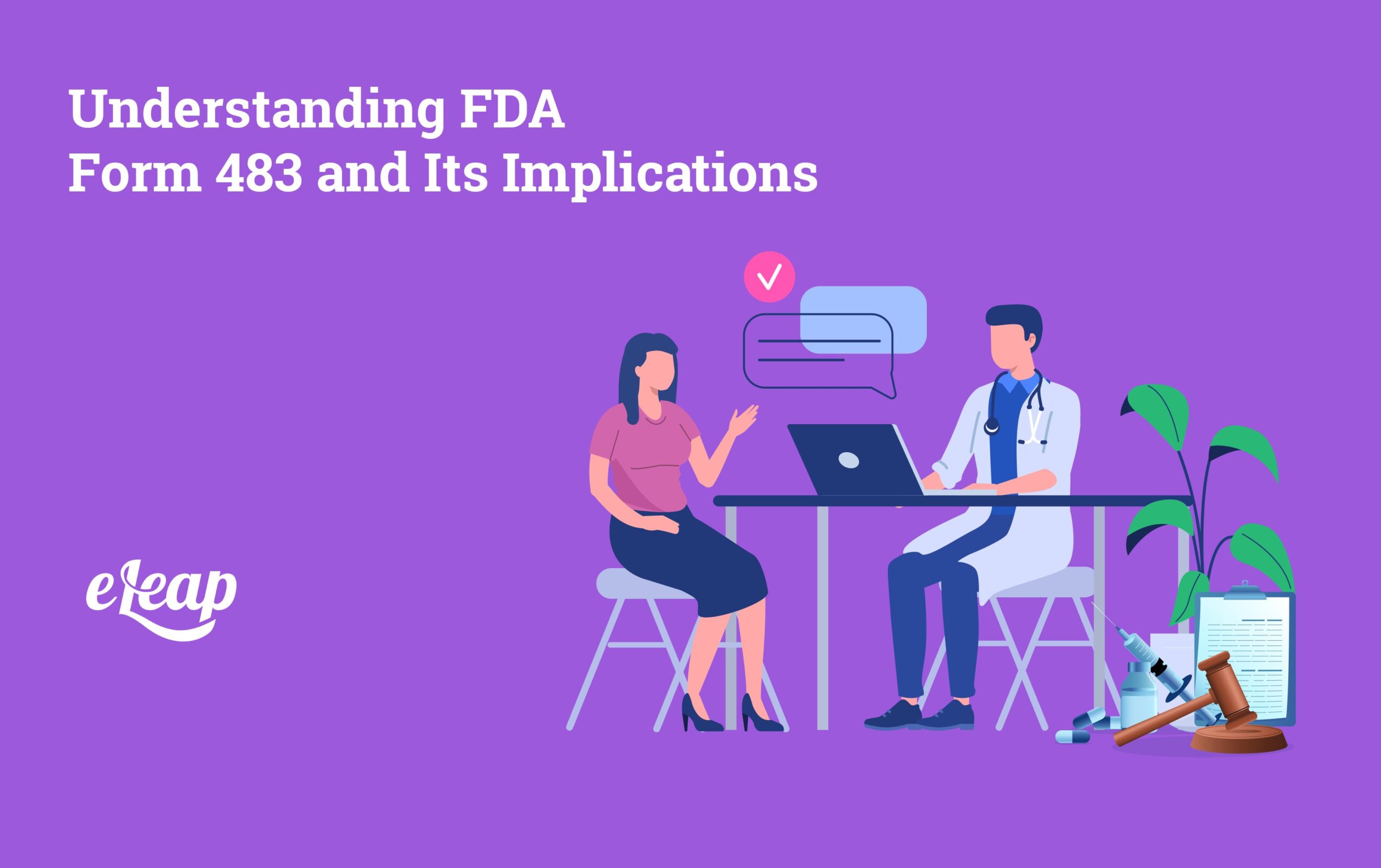Understanding FDA Form 483 and Its Implications

Regarding regulatory compliance, the Food and Drug Administration (FDA) Form 483, abbreviated as “483,” is necessary for businesses involved in pharmaceuticals, biotechnology, and medical devices. This document, which FDA assessors issue following their examinations, lists any possible regulatory standard infractions. Businesses operating in highly controlled industries must understand the significance of FDA 483 to preserve agreement, uphold public security, and sustain excellence.
FDA inspectors employ Form 483 to record their explanations while examining regulated facilities. It works to advise the organization’s management about examination results and pay attention to zones that raise queries about adherence to FDA rules. Explanations about non-compliance with supervisory standards, deviations from Current Good Manufacturing Practices (cGMP), and other potential violations are usually included in the form.
An FDA Form 483 is primarily used to notify management of the company of detected deviations from applicable regulations and current good manufacturing practice (cGMP) requirements. It gives the business a chance to identify and fix these anomalies quickly.
Essential Components of FDA Form 483

- A thorough account of the observations made by FDA inspectors throughout the inspection procedure is included in the form. These observations could bear on record-keeping, production, quality assurance, facility upkeep, and other areas.
- Every observation usually refers to a particular rule or set of rules that the observed inadequacy might violate. These observations aid the business in comprehending the regulatory foundation for the observation and implementing the necessary remedial measures.
- Though inspectors are free to offer their subjective opinions regarding the possible impact on product safety, quality, and regulatory compliance, observations on FDA Form 483 are not rated in order of severity.
- A deadline is specified in the form for the company’s response to the remarks made. Usually, this response entails justifying, outlining plans for fixing the identified flaws, and taking corrective action as necessary.
Understanding the Inspection Process:
FDA examinations are conducted to confirm the security, efficiency, and quality of regulated items and calculate compliance with regulatory values. Various formations, including engineering factories, labs, and research organizations, may be the subject of deliberate or unprepared inspections.
FDA assessors examine protocols, records, and facility operations during an examination to determine whether or not the facility complies with appropriate laws. They might also gather samples for testing and interview staff members. Inspectors use FDA Form 483 to record their observations and conclusions during the procedure.
Does the FDA Form 483 cover everything?
No, the FDA Form 483 is not meant to comprehensively describe every scenario in which a law or regulation can be broken. It represents the observations made during the examination and might only include some possible problems. However, it draws attention to notable deviations that call for investigation and remediation.
Giving the business access to FDA Form 483
The FDA investigator speaks with the company’s management about the findings in Form 483 once the inspection is over. After that, the business has time to formally reply in writing to the observations, detailing any planned or implemented corrective steps.
FDA Form 483s are not absolute agency actions, nor do they denote an agency’s ultimate assumption about compliance. If the detected deviations are not satisfactorily corrected, it recommends potential regulatory implementation procedures. The FDA may take extra regulatory action, including product seizures and warning letters based on the seriousness of the inspections.
FDA examiners may perform follow-up reviews to confirm the implementation and efficiency of corrective steps after getting the company’s response to FDA Form 483. Other than warning letters, fines, and invention recalls, the FDA may take extra regulatory action based on the significance of the found faults and the company’s reaction.
Concluding all FDA Form 483 is essential to regulatory supervision because it informs businesses about deviations found during inspections. It acts as a check on adherence to legal standards and safeguards the general public’s health. Organizations must respond promptly and professionally to the explanations detailed in Form 483 to decrease the possibility of regulatory enforcement records.
When an FDA Form 483 is received, what should a corporation do?
To attain compliance with regulatory ethics, a company should carefully study the observations explained in Form 483, create a detailed response plan, and rapidly fix any flaws.
Can the issuance of an FDA Form 483 be appealed?
Companies can answer the explanations and offer clarification or explanations for their behavior, even though the FDA does not deliver a formal appeal mechanism for the issue of Form 483.
This answer enables the business to clarify any errors or misinterpretations and offer context for the noted deviations, even though it does not formally contest the form’s issuance. Companies may also ask to meet with FDA representatives to discuss the observations and reaction strategy in further detail.
How long does a company have to respond to an FDA Form 483?
A business usually has 15 working days to reply to the observations recorded on an FDA Form 483. Nevertheless, if necessary, the FDA may give extensions case-by-case.
What could happen if observations in an FDA Form 483 are not addressed?
If observations listed on an FDA Form 483 are not appropriately addressed, the FDA may take additional regulatory enforcement steps, including warning letters, product recalls, or legal actions.
Is the FDA Form 483 issued available to the public?
Yes, FDA Form 483 and related inspectional observations are public records and can be accessed by the general public upon request under the Freedom of Information Act (FOIA).